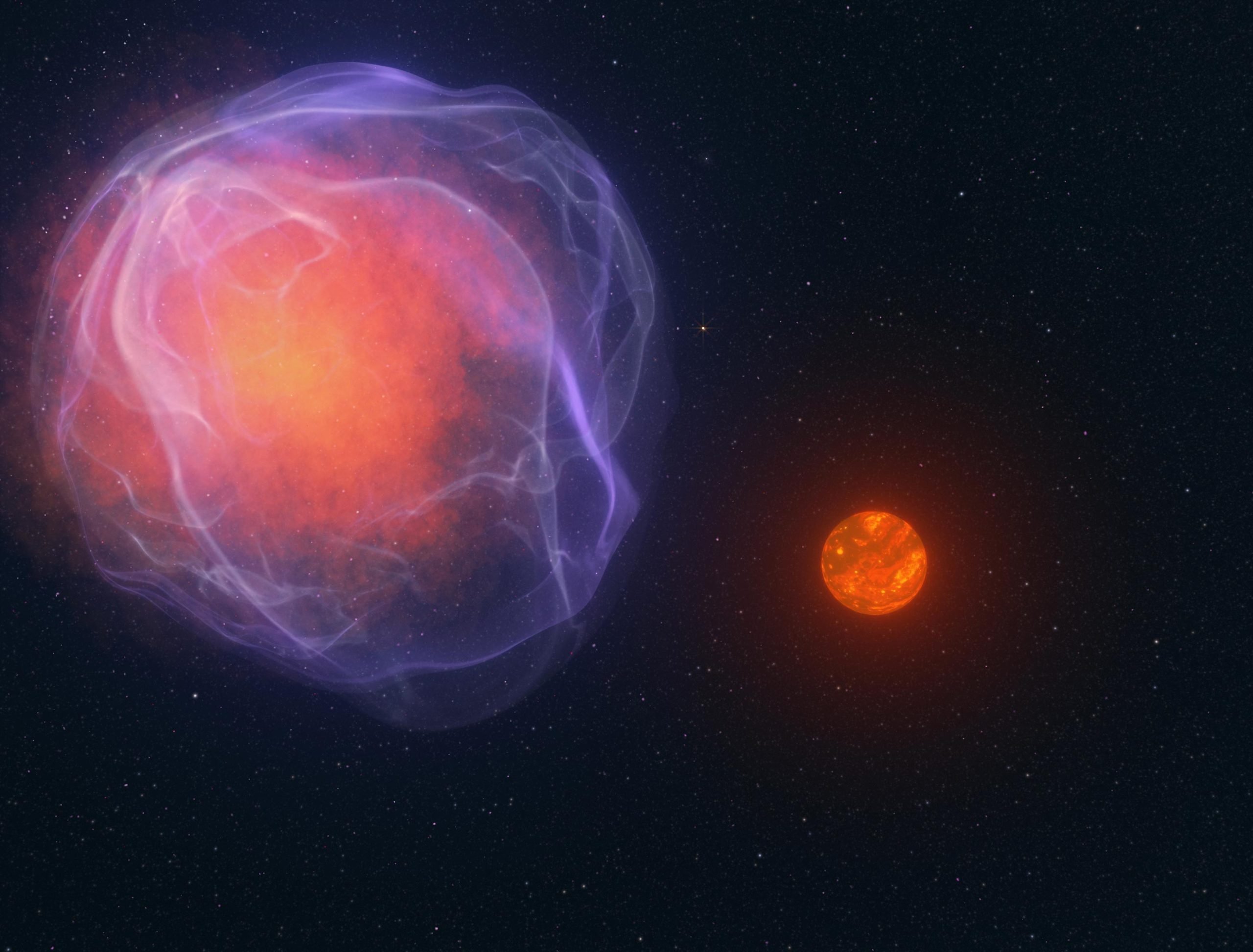(NLDO) - A strange object named CWISE J1249 has just escaped the "realm of death" and is moving so fast that it is able to escape the clutches of the Milky Way.
According to SciTech Daily, citizen scientists collaborating with NASA's Backyard Worlds: Planet 9 project discovered a strange object with super speed named CWISE J1249.
With enough speed to defy the gravity of Earth's Milky Way galaxy, CWISE J1249 is on its way into intergalactic space at about 1 million miles per hour (1.6 million kilometers per hour).
Additionally, it is also the first hypervelocity object discovered to have a mass similar to or smaller than a small star.

An illustration depicting a brown dwarf (left) next to a supernova. The brown dwarf may be the newly discovered alien object - Illustration: Adam Makarenko / WM Keck Observatory
According to initial analysis, this strange object could be a strange low-mass star. Or most likely, a brown dwarf.
A brown dwarf occupies a state somewhere between a star and a planet: It is too large to be a planet and has no parent star, but too small to sustain nuclear fusion in its core like a star.
Therefore, brown dwarfs are sometimes called "failed stars" or "super-planets".
Regular brown dwarfs aren't all that rare. Backyard Worlds: Planet 9 has discovered more than 4,000 brown dwarfs.
But no other brown dwarf is known to be on the run from the Milky Way.
The object also has a unique composition. Data obtained from the WM Keck Observatory on Maunakea, Hawaii, shows that it is much less metallic than other stars and brown dwarfs.
This unusual composition suggests that CWISE J1249 is an ancient object, possibly from one of the first generations of stars in our galaxy, making it a treasure trove for researchers.
But why this object is moving at such high speed remains a mystery.
The most supported hypothesis is that CWISE J1249 originally came from a binary star system with a white dwarf.
This white dwarf "ate" CWISE J1249 so much that it was overloaded with material, exploded into a supernova, and blew the brown dwarf away.
Another possibility is that CWISE J1249 originated in an ancient, tightly bound type of star cluster called a globular cluster. A chance encounter with a pair of black holes with incredibly complex interactions sent it hurtling away.
Source: https://nld.com.vn/nasa-phat-hien-vat-the-la-lao-nhanh-1-trieu-dam-gio-196240821102653202.htm







































































































Comment (0)